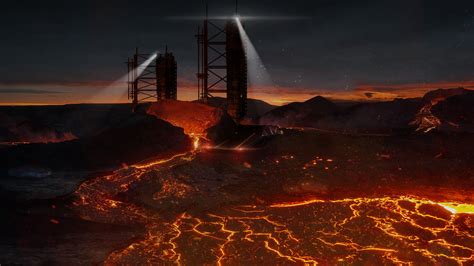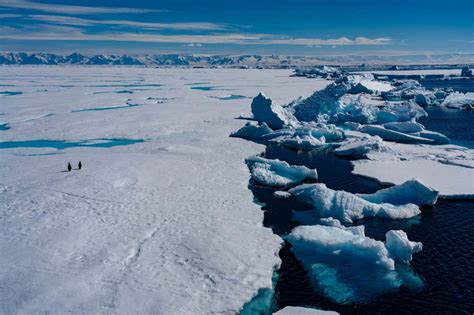
A remote, quadruple-cratered volcano in the Kuril Islands, once home to a secret Soviet military base, is now under scrutiny for its potential link to a mysterious climate event that occurred nearly 200 years ago, specifically the extreme winter of 1829-1830. Research suggests that the volcano, known as Chirpoy, might have contributed significantly to the atmospheric sulfur loading that caused the unusually harsh winter, challenging previous assumptions about the event’s origin.
The Kuril Islands, a volcanic archipelago stretching between Russia’s Kamchatka Peninsula and Japan, have long been a region of geopolitical and scientific interest. During the Cold War, the Soviet Union heavily militarized these islands, establishing numerous bases and facilities, including one on Chirpoy, an island comprised of four overlapping stratovolcanoes. This base, now abandoned, adds a layer of intrigue to the ongoing scientific investigation. The initial assessment of the “extreme winter” had focused on tropical eruptions, but new evidence is pointing towards a higher-latitude source.
The research, led by scientists from various international institutions, utilized ice core samples from Greenland and Antarctica to analyze volcanic sulfate deposits. These deposits serve as fingerprints, allowing researchers to identify the specific volcanic eruptions that injected sulfur dioxide into the stratosphere. Sulfur dioxide, upon reaching the stratosphere, reacts with water vapor to form sulfate aerosols, which reflect sunlight back into space, leading to a temporary cooling of the Earth’s surface.
The team’s analysis revealed a substantial sulfate spike in the ice core record corresponding to the 1829-1830 period. The isotopic composition of the sulfate pointed towards a volcanic source rich in sulfur, a characteristic consistent with the composition of Chirpoy’s volcanic rocks. “The composition of sulfate in the ice cores matches the type of sulfur found at Chirpoy,” explains Dr. Alan Robock, a professor of climate science at Rutgers University who was not involved in the study but is familiar with the research. He added that the findings are “certainly plausible” and warrant further investigation. The sheer volume of sulfate deposited in the ice cores suggests a significant eruption, potentially larger than initially estimated for that period.
The location of Chirpoy, at a relatively high latitude, is crucial to understanding its potential impact on the climate. Volcanic eruptions at higher latitudes tend to have a more pronounced effect on the Northern Hemisphere climate because the stratospheric circulation patterns favor the dispersion of aerosols towards the poles. This means that sulfur dioxide injected into the stratosphere by Chirpoy could have quickly spread across the Arctic and mid-latitudes, contributing to the severe winter conditions experienced in Europe and North America.
Further complicating the investigation is the limited historical documentation of volcanic activity in the Kuril Islands during the early 19th century. The remoteness of the region and the lack of systematic monitoring at the time mean that many eruptions may have gone unrecorded. This makes it difficult to definitively link the sulfate spike in the ice cores to a specific eruption of Chirpoy.
To address this challenge, the researchers are employing a combination of geological fieldwork, satellite remote sensing, and climate modeling. Geological fieldwork involves collecting and analyzing volcanic rocks from Chirpoy to determine their age, composition, and eruption history. Satellite remote sensing is used to identify any signs of recent volcanic activity, such as thermal anomalies or gas plumes. Climate modeling is used to simulate the atmospheric dispersion of sulfur dioxide from Chirpoy and assess its potential impact on global climate.
The climate models are particularly important for understanding the complex interplay between volcanic eruptions and climate variability. The models can simulate the transport and dispersion of sulfate aerosols in the stratosphere, as well as their impact on radiative forcing, temperature, and precipitation patterns. By comparing the model simulations with historical climate records, the researchers can assess the likelihood that Chirpoy played a significant role in the extreme winter of 1829-1830.
One of the key uncertainties in the climate modeling is the magnitude and timing of the eruption. The ice core record provides an estimate of the total amount of sulfate injected into the stratosphere, but it does not reveal the precise timing of the eruption or the eruption rate. To address this uncertainty, the researchers are running multiple model simulations with different eruption scenarios, varying the magnitude, timing, and duration of the eruption.
The ongoing research on Chirpoy highlights the importance of studying volcanic eruptions as a driver of climate change. While human activities are now the dominant factor influencing global climate, volcanic eruptions have played a significant role in shaping Earth’s climate throughout history. Large volcanic eruptions can inject massive amounts of sulfur dioxide into the stratosphere, causing a temporary cooling of the Earth’s surface that can last for several years.
The eruption of Mount Tambora in 1815, for example, is the largest volcanic eruption in recorded history. It injected so much sulfur dioxide into the stratosphere that it caused the “Year Without a Summer” in 1816, characterized by widespread crop failures, famine, and disease. The Tambora eruption serves as a stark reminder of the potential for volcanic eruptions to disrupt human societies and ecosystems.
The research on Chirpoy also underscores the need for improved monitoring of volcanic activity in remote regions of the world. Many of the world’s volcanoes are located in sparsely populated areas, where they pose a limited threat to human life. However, even relatively small volcanic eruptions can have a significant impact on global climate if they inject sulfur dioxide into the stratosphere.
“We need to better understand the potential for volcanic eruptions to influence climate,” says Dr. Tamsin Mather, a volcanologist at the University of Oxford who is not involved in the Chirpoy research. “This requires a combination of geological studies, remote sensing observations, and climate modeling.”
The abandoned Soviet military base on Chirpoy adds a unique dimension to the research. The presence of the base suggests that the Soviet Union may have had a strategic interest in the region, possibly related to its proximity to Japan and the Pacific Ocean. The base also provides a valuable opportunity for researchers to study the environmental impacts of military activities in a remote and pristine environment.
The remnants of the base, including abandoned buildings, vehicles, and equipment, offer a glimpse into the Cold War era and the Soviet Union’s military presence in the Kuril Islands. The base also poses some environmental challenges, such as the potential for soil and water contamination from fuel spills and other pollutants.
The research team plans to conduct further investigations at the Chirpoy site to assess the environmental impacts of the Soviet military base and to search for additional evidence of past volcanic activity. They hope that their research will shed light on the complex interplay between volcanic eruptions, climate change, and human activities in the Kuril Islands.
The investigation also highlights the ongoing territorial dispute between Russia and Japan over the Kuril Islands. Japan claims that the islands, which it calls the Northern Territories, were illegally occupied by the Soviet Union at the end of World War II. The dispute has been a major obstacle to the normalization of relations between the two countries.
The scientific research on Chirpoy could potentially have implications for the territorial dispute. If the research confirms that the volcano played a significant role in the extreme winter of 1829-1830, it could raise questions about the historical importance of the islands and their potential impact on global climate.
Ultimately, the research on Chirpoy is a testament to the power of interdisciplinary collaboration. By bringing together scientists from different fields, including volcanology, climatology, geochemistry, and history, the researchers are able to gain a more complete understanding of the complex processes that shape our planet’s climate.
The study of Chirpoy’s potential impact on the 1829-1830 climate event is not just about understanding the past; it also has implications for the future. As the world faces the challenges of climate change, it is more important than ever to understand the natural factors that can influence global climate. By studying volcanic eruptions, scientists can gain valuable insights into the Earth’s climate system and improve our ability to predict and mitigate the impacts of climate change.
The research also serves as a reminder that even seemingly remote and insignificant places can have a profound impact on global climate. The Kuril Islands, despite their remoteness and harsh environment, are home to a number of active volcanoes that have the potential to influence climate on a global scale.
The ongoing research on Chirpoy is a complex and multifaceted endeavor that requires a combination of scientific expertise, logistical support, and international collaboration. The researchers are committed to conducting their work in a responsible and ethical manner, respecting the environment and the cultural heritage of the Kuril Islands.
The findings of the research will be disseminated through scientific publications, presentations, and outreach activities. The researchers hope that their work will raise awareness about the importance of studying volcanic eruptions and their potential impact on global climate.
The research team is also collaborating with local communities in the Kuril Islands to share their findings and to learn from their traditional knowledge of the region’s environment. The local communities have a deep understanding of the islands’ natural resources and their vulnerability to environmental change.
The research on Chirpoy is an ongoing process, and the researchers are continuing to collect and analyze data. They hope that their work will contribute to a better understanding of the Earth’s climate system and the role of volcanic eruptions in shaping our planet’s history.
The investigation of Chirpoy and its potential link to the climate blast 200 years ago is an example of how scientific inquiry can uncover hidden connections between seemingly disparate events. It highlights the importance of interdisciplinary research, international collaboration, and a commitment to understanding the complex processes that govern our planet.
The discovery of a possible link between Chirpoy and the 1829-1830 winter also sheds light on the limitations of historical climate data. The lack of comprehensive monitoring and documentation in the early 19th century makes it difficult to definitively attribute specific climate events to specific causes. This underscores the need for improved climate monitoring and data collection in the present day, so that we can better understand and respond to future climate challenges.
“This research is a good reminder that the Earth is a complex system and that even remote events can have global consequences,” adds Dr. Robock.
FAQ about Chirpoy Volcano and the 1829-1830 Climate Event:
Q1: What is Chirpoy, and where is it located?
A1: Chirpoy is a remote island in the Kuril Islands, a volcanic archipelago stretching between Russia’s Kamchatka Peninsula and Japan. It is comprised of four overlapping stratovolcanoes and was formerly the site of a secret Soviet military base during the Cold War.
Q2: What is the significance of the 1829-1830 “extreme winter”?
A2: The winter of 1829-1830 was characterized by unusually harsh weather conditions across Europe and North America. Temperatures were significantly lower than average, and there were reports of widespread snow and ice. The cause of this extreme winter has been a subject of scientific debate, with previous explanations focusing on tropical volcanic eruptions.
Q3: How might Chirpoy volcano be linked to the 1829-1830 climate event?
A3: Researchers have found evidence of a significant sulfate spike in ice core samples from Greenland and Antarctica dating back to the 1829-1830 period. The isotopic composition of the sulfate suggests that it originated from a volcanic eruption rich in sulfur, a characteristic consistent with the composition of Chirpoy’s volcanic rocks. Because of its high latitude, an eruption at Chirpoy could have had an outsized effect on the Northern Hemisphere.
Q4: What research methods are being used to investigate this potential link?
A4: The research team is employing a combination of methods, including: analysis of ice core samples to identify volcanic sulfate deposits; geological fieldwork to collect and analyze volcanic rocks from Chirpoy; satellite remote sensing to monitor volcanic activity; and climate modeling to simulate the atmospheric dispersion of sulfur dioxide and assess its impact on global climate.
Q5: What are the broader implications of this research?
A5: The research highlights the importance of studying volcanic eruptions as a driver of climate change and the need for improved monitoring of volcanic activity in remote regions. It also underscores the complex interplay between volcanic eruptions, climate change, and human activities. Moreover, it is a reminder of the potential impact of even seemingly remote events on global climate and highlights the limitations of historical climate data, reinforcing the need for ongoing climate monitoring and data collection. The potential for further research on the environmental impact of former Soviet military bases is also significant.
The researchers will also study additional ice core samples to gather further data to help to support their hypothesis. The project is also aimed at creating a more accurate model that will show the global distribution of sulfuric acid after a high latitude eruption. Additional details about the Soviet Military presence on the islands will also be investigated. This will include interviews and research of Soviet archives. The Kuril Islands offer an excellent opportunity to study the intersection of volcanism, climatology, and international politics.
Further Expanding the Article:
The implications of linking Chirpoy to the extreme winter extend beyond simply rewriting history. Understanding the specific characteristics of the eruption and its climatic consequences could offer valuable insights into how future volcanic events might impact our increasingly vulnerable world. With a climate already stressed by anthropogenic warming, the added influence of a significant volcanic eruption could have cascading effects on ecosystems, agriculture, and human societies.
One key area of investigation involves refining the estimates of the eruption’s magnitude. While the ice core data provides an indication of the total sulfur release, it doesn’t offer precise details about the eruption’s intensity, duration, or plume height. These factors are crucial for accurately simulating the atmospheric dispersion of sulfur dioxide and its subsequent conversion to sulfate aerosols.
Researchers are using sophisticated climate models to explore a range of eruption scenarios, varying the eruption parameters within plausible bounds. By comparing the model outputs with historical climate records, such as temperature and precipitation data, they can identify the eruption scenarios that best reproduce the observed climate anomalies during the 1829-1830 period. This iterative process helps to constrain the estimates of the eruption’s characteristics and improve the accuracy of the climate simulations.
Another important aspect of the research is to investigate the potential for synergistic effects between volcanic eruptions and other climate drivers. For example, the extreme winter of 1829-1830 might have been influenced not only by the volcanic eruption but also by other factors such as changes in solar activity or natural climate variability. Disentangling the contributions of these different drivers requires a comprehensive analysis of historical climate data and the use of sophisticated statistical techniques.
The abandoned Soviet military base on Chirpoy adds a unique and intriguing dimension to the research. The base’s presence suggests that the Soviet Union considered the island to be strategically important, likely due to its location in the Kuril Islands chain and its proximity to Japan. The reasons for the base’s abandonment are unclear, but they may have been related to the collapse of the Soviet Union or to changes in military strategy.
The base itself represents a significant environmental legacy. The remnants of the base, including abandoned buildings, vehicles, and equipment, pose a potential threat to the island’s fragile ecosystem. The presence of fuel spills and other pollutants could contaminate the soil and water, harming plant and animal life.
The research team is collaborating with environmental scientists to assess the environmental impacts of the Soviet military base and to develop strategies for remediating any contamination. This work is not only important for protecting the environment but also for understanding the long-term consequences of military activities in remote regions.
The territorial dispute between Russia and Japan over the Kuril Islands adds another layer of complexity to the research. Japan claims that the islands, which it calls the Northern Territories, were illegally occupied by the Soviet Union at the end of World War II. The dispute has been a major obstacle to the normalization of relations between the two countries.
The scientific research on Chirpoy could potentially have implications for the territorial dispute. If the research confirms that the volcano played a significant role in the extreme winter of 1829-1830, it could raise questions about the historical importance of the islands and their potential impact on global climate. This could potentially influence the political dynamics of the region.
Beyond the specific case of Chirpoy, the research highlights the broader importance of understanding the role of volcanic eruptions in shaping Earth’s climate. Volcanic eruptions are a natural phenomenon that have occurred throughout Earth’s history. Large volcanic eruptions can inject massive amounts of sulfur dioxide into the stratosphere, causing a temporary cooling of the Earth’s surface that can last for several years.
The eruption of Mount Tambora in 1815, for example, is the largest volcanic eruption in recorded history. It injected so much sulfur dioxide into the stratosphere that it caused the “Year Without a Summer” in 1816, characterized by widespread crop failures, famine, and disease. The Tambora eruption serves as a stark reminder of the potential for volcanic eruptions to disrupt human societies and ecosystems.
In the context of human-caused climate change, understanding the impact of volcanic eruptions is more important than ever. As the world warms due to greenhouse gas emissions, the effects of volcanic eruptions on climate may be amplified. For example, a volcanic eruption that occurs during a period of warming could trigger a more prolonged and severe cooling event than it would have during a pre-industrial climate.
The research on Chirpoy underscores the need for improved monitoring of volcanic activity around the world. Many of the world’s volcanoes are located in remote and sparsely populated areas, where they pose a limited threat to human life. However, even relatively small volcanic eruptions can have a significant impact on global climate if they inject sulfur dioxide into the stratosphere.
Advances in satellite technology and remote sensing techniques have made it possible to monitor volcanic activity from space, providing valuable data on volcanic eruptions in even the most remote regions. This data can be used to improve our understanding of volcanic processes and to predict the potential impact of volcanic eruptions on climate.
The research on Chirpoy also highlights the importance of interdisciplinary collaboration. By bringing together scientists from different fields, including volcanology, climatology, geochemistry, and history, the researchers are able to gain a more complete understanding of the complex processes that shape our planet’s climate.
The ongoing research on Chirpoy is a testament to the power of scientific inquiry. By asking questions, collecting data, and analyzing evidence, scientists are able to unravel the mysteries of the natural world and to gain a deeper understanding of our planet’s history and its future.
The investigation of Chirpoy and its potential link to the climate blast 200 years ago is an ongoing journey of discovery. The researchers are committed to continuing their work and to sharing their findings with the world. They hope that their research will contribute to a better understanding of the Earth’s climate system and the role of volcanic eruptions in shaping our planet’s history.
The team of researchers plan on returning to the island of Chirpoy to collect additional samples. They will also work with scientists at other institutions to develop new climate models that can more accurately simulate the effects of volcanic eruptions on global climate.
The ultimate goal of the research is to provide policymakers and the public with the information they need to make informed decisions about climate change. By understanding the role of volcanic eruptions in shaping Earth’s climate, we can better prepare for the challenges of a changing world.
The scientific investigation into Chirpoy emphasizes the importance of scientific curiosity and the pursuit of knowledge. The project’s findings will hopefully influence not only our understanding of volcanology and climatology but also international relations and environmental stewardship. By unraveling the mysteries of the past, researchers hope to help forge a more informed and sustainable future.
The exploration of Chirpoy serves as a reminder that there are still many unknown facets of our planet. It is a beacon to continue to explore, investigate, and understand the power of nature and its impact on the human experience.









